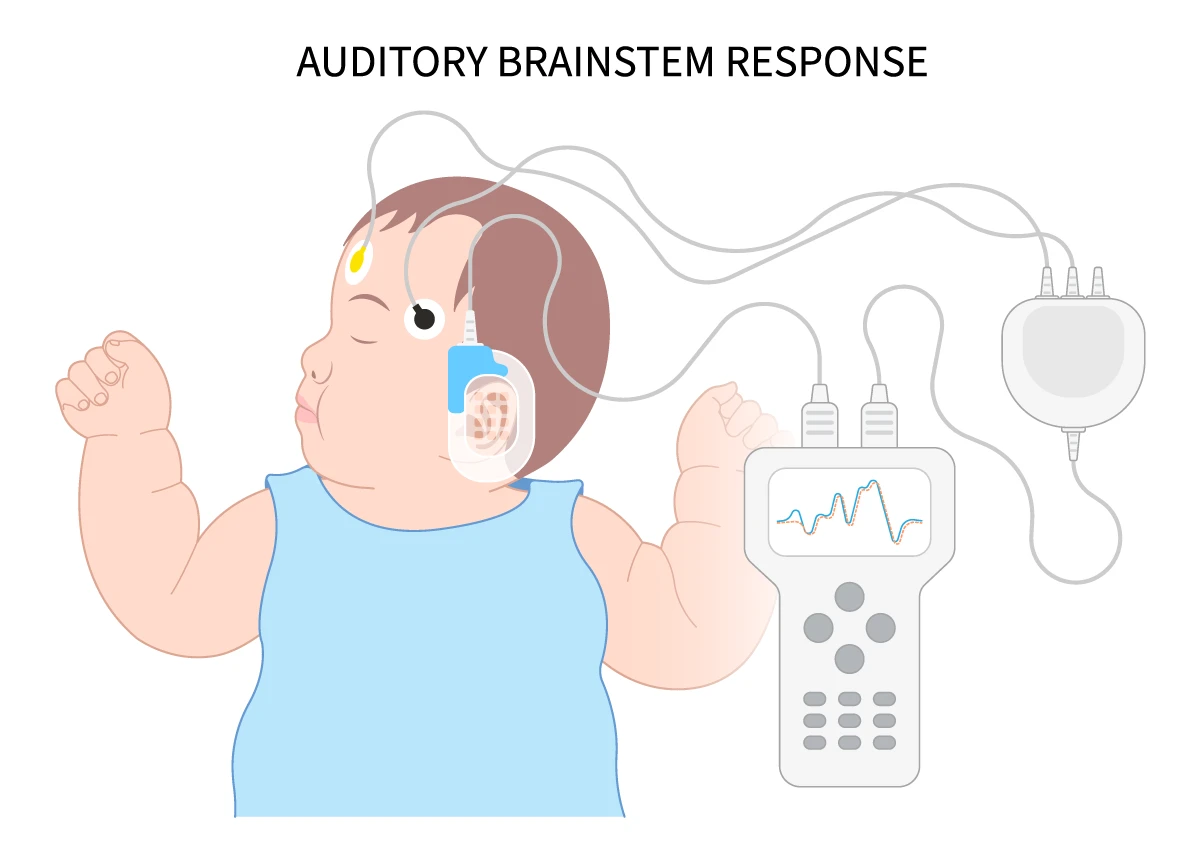Auditory brainstem response (ABR) testing
At Advocate Health Care, our experienced audiologists utilize the latest equipment to discover hearing problems early so you can get the best treatment possible.
An auditory brainstem response (ABR) is a diagnostic hearing test that’s crucial in the evaluation of hearing health.
The ABR test objectively and accurately reveals potential hearing issues, making it an excellent choice for newborns, infants and individuals who may have difficulty participating in traditional hearing tests.
With early detection, precise diagnosis and personalized intervention, ABR testing is a crucial step in ensuring optimal hearing health.
What is auditory brainstem response (ABR)?

Also known as brainstem auditory evoked response (BAER) or auditory evoked brainstem response, auditory brainstem response is a painless diagnostic procedure used to measure the electrical activity of the auditory nerve and brainstem in response to sound.
The auditory nerve is responsible for sending electrical signals to the brain, which turns that signal into a recognizable sound like music or laughter. The test measures the time it takes for the sound signals to travel from the ear to the brainstem. This helps in determining the presence and nature of any loss of hearing or auditory pathway issue and providing a hearing loss diagnosis.
Understanding ABR test process
During an ABR test, you’ll need to be quiet and minimize movement for about one to two hours.
Preparing for an ABR test
If you or your child is scheduled for an ABR test, you'll first review testing procedures with your audiologist, who will provide specific instructions and answer any questions you have.
Other tips on preparing for an ABR test include:
- It is important to inform your doctor of any medications you or your child are taking, as some medications can affect the ABR test results.
- You’ll need to ensure that your ears are clean and free of wax. If there is excessive earwax, your audiologist may need to remove it to ensure accurate test results.
- If you're bringing a child for the test, consider bringing things familiar to them, such as a stuffed animal or blanket, to help them feel at ease.
The ABR test procedure
Your audiologist will attach small adhesive recording devices on the forehead and ears during an ABR test. These electrodes send signals from the auditory nerve and brainstem as they react to sound. The signals are recorded, providing valuable insights into the functionality of these pathways.
Benefits of ABR in hearing evaluation
The auditory brainstem response test offers numerous advantages in the evaluation of hearing health, such as:
- Early detection: ABR testing can identify hearing issues in newborns, allowing for early intervention and treatment, which is critical for language development and overall well-being.
- Objective assessment: Unlike traditional hearing tests, ABR provides objective data about hearing function because it’s not reliant on a patient's response.
- Accurate diagnosis: ABR can pinpoint the specific location and nature of hearing problems.
- Individualized treatment options: With ABR test results, your doctor can create personalized treatment strategies, such as hearing aids, cochlear implants, or therapeutic interventions.
- Monitoring progress: ABR can be used to track the effectiveness of treatments and assess improvements in hearing function over time.
Interpreting ABR test results
After your ABR test, your audiologist will explain the results to you, discuss possible implications, and recommend any necessary interventions or treatments.
ABR results typically include several key components:
- Latency: This measures the time it takes for the brainstem to respond to the sound stimulus. Prolonged latency may indicate hearing issues.
- Waveform analysis: The shape and size of the recorded waveforms provide valuable information about the integrity of the auditory pathway.
- Amplitude: Amplitude measures the strength of the response. Reduced amplitude may suggest hearing impairment.
- Hearing threshold: ABR results can determine the softest sounds an individual can hear.
ABR testing at Advocate Health Care
Advocate Health Care’s team of audiologists hold credentials from the Division of Specialized Care for Children (DSCC) and Early Intervention (EI). We will guide you through the process, ensuring your comfort and understanding every step of the way.
Get care
We help you live well. And we’re here for you in person and online.
